Some of the links in this post may be affiliate links.
Watering a moth orchid that is growing in sphagnum moss requires a fundamentally different approach versus one that is growing in a bark mix potting medium. In this post, I will discuss some important points to know for watering Phalaenopsis orchids growing in sphagnum moss. There is more to it than meets the eye!
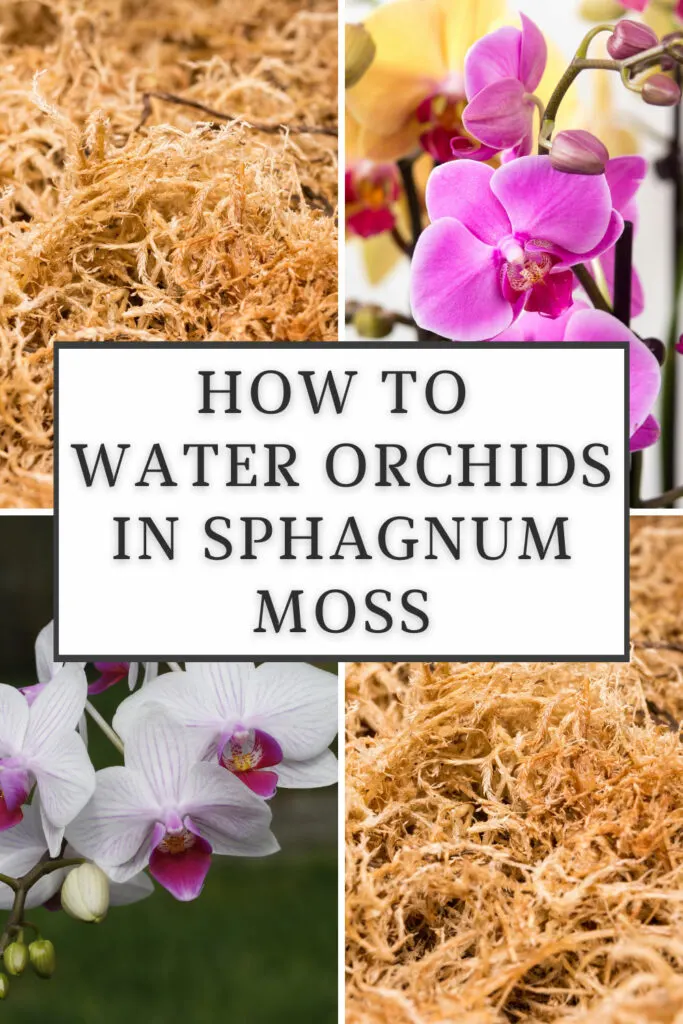
Table of Contents
Table of Contents
HOW TO WATER ORCHIDS IN MOSS
Using a good sphagnum moss has numerous advantages for your orchid, but also has some cons as well. In the end, whether you use an orchid bark or sphagnum moss, it’s up to you to determine what you’re most comfortable with.
In this post, I’ll outline the considerations to help you decide.
1. WATER WHEN ADEQUATELY DRY
In a way, knowing when to water your orchid that is growing in sphagnum moss is easier to tell than one growing bark. All you have to do is simply wait until the top half an inch to an inch or so is dry.
Go ahead and take your index finger and insert it into the sphagnum moss to judge this.
Once the top 1/2 inch to an inch is dry, go ahead and take your plant to your sink and take the plant out of its decorative pot (if it’s in one) and water the sphagnum moss thoroughly until excess water escapes the drainage holes at the bottom of the pot.
It is not necessary to measure the amount of water! Simply use as much water as you need to in order to moisten all of the moss.
At this point, you may be wondering, “I thought I was supposed to be watering my orchids with ice cubes!” My short answer is please don’t.
Learn why using ice cubes to water orchids is a bad idea. These are tropical plants and ice should naturally be avoided. The natural environment of Phalaenopsis orchids in general is warm and they never encounter ice.
Once you’re done watering, take your orchid pot and put it back in its growing location.
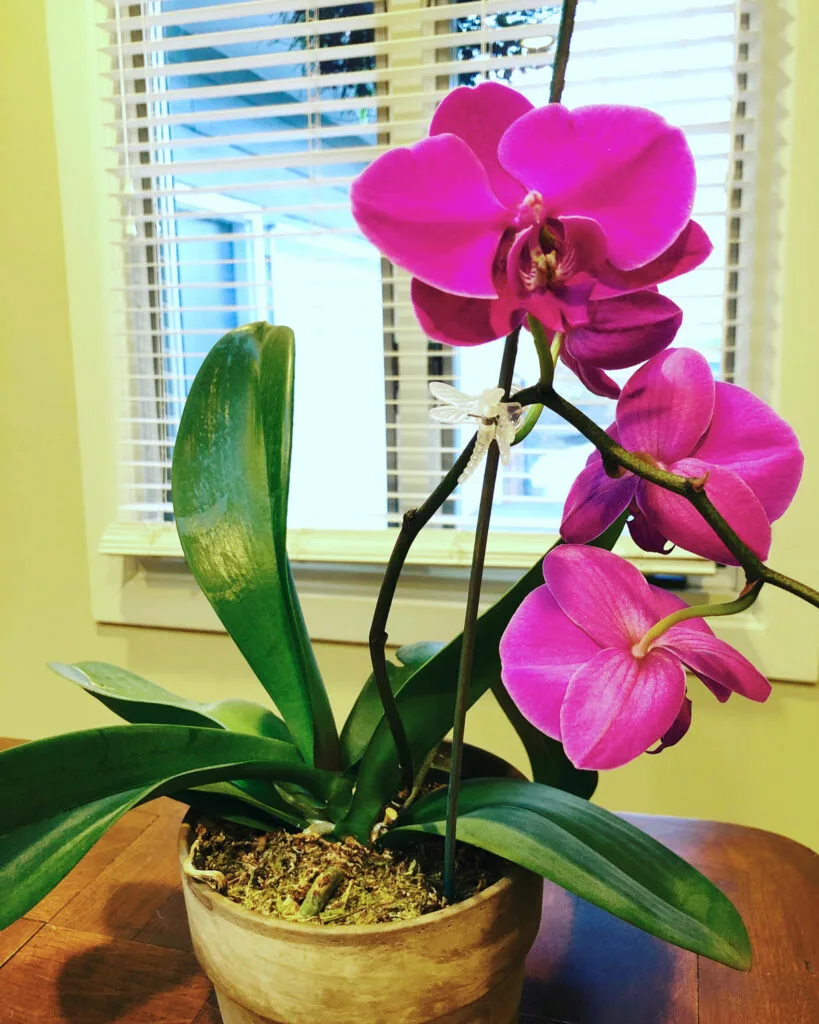
If you want to learn all about how to get your orchid to rebloom reliably and have healthy, thriving moth orchid plants, don’t miss my signature, online orchid care course, Become an Orchid Master. It also includes bonuses with support from me, personally, to guide you in your orchid journey!
2. SOAK YOUR PLANT IF THE MOSS HAS GONE TOO DRY
Moth orchids detest drying out too much and will suffer pretty quickly if they remain in that state.
You’ll notice the orchid starting to droop and the roots will become very dry and wrinkly and will shrink. In addition, you will also see some yellow leaves, with the lowermost leaves yellowing first.
You may also notice that the weight of the pot is much less if there is no moisture left in the moss.
Phalaenopsis orchids lack the water-storing pseudobulbs that many other types of orchids have, such as orchids in the Cattleya alliance. As a result, they are not drought tolerant.
If you let your sphagnum moss dry out completely for too long, it will turn hydrophobic, which simply means that it will repel water.
You may try watering your orchid and notice that the water will bead right off or just sit on top and not absorb readily.
If you notice this, you’ll need to do some work in order for the sphagnum moss to accept water again. This is what I recommend doing to remedy this situation:
- Most orchids are sold growing in a clear plastic pot that has drainage holes, and it’s slipped inside of a decorative pot with no drainage hole. If this is the case, leave the plant inside of the decorative pot and fill it up with lukewarm water over the surface of the moss. If you don’t have a decorative pot that it’s in, you can place the plant in a bowl of water or a small bucket.
- Leave it there for at least half an hour to an hour or so for the sphagnum moss to hydrate. Wait until the surface of the moss in the pot feels moist.
- After that point, lift the plant out from the decorative pot, dump out the excess water, and put the plant back in the decorative pot. You should notice that it feels much heavier since it absorbed water.
This soaking method works well, versus just hand-watering the moss a few times in a row. Save yourself the frustration and let time do the work for you.
After this point, try and not let your orchid growing in sphagnum moss dry out to the same extent.
Remember that these plants only grow maybe 1-2 new leaves a year, so any major stress from dehydration will cause the plant to suffer and it will take a long time of consistent care in order for it to return to its former glory!
3. REPOT IF YOUR MOSS IS TIGHTLY PACKED
One of my pet peeves of buying moth orchids in sphagnum moss is that sometimes the growers pack the sphagnum moss in much too tightly.
This type of configuration may work well in the growing environment of the nursery grower’s greenhouse, but in the home, not so much.
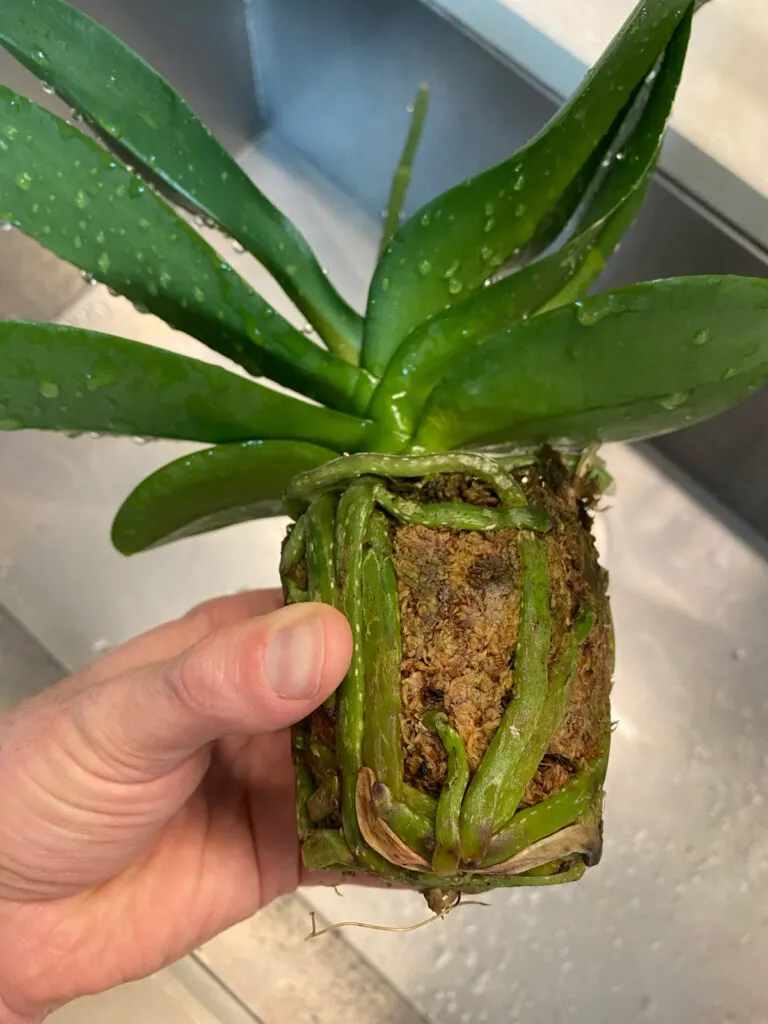
Cooler conditions inside our homes, along with less light, can cause the moss to stay wet for too long and not dry out quickly enough.
Depending on your conditions at home, there is a risk of not enough air to the orchid’s roots if the moss is packed too tightly, and this can potentially increase the risk of root rot.
After your orchid is done blooming, if your plant is packed tightly with sphagnum moss, do your plant a favor and repot your plant so that the sphagnum moss is looser.
If it’s been growing in sphagnum, it’s probably best to keep it in sphagnum. You can transition to bark, but there are pros and cons to sphagnum vs bark.
IS BARK OR MOSS BETTER FOR ORCHIDS?
There are pros and cons for both and you can grow beautiful moth orchid is either. These are the most common growing media for moth orchids, and remember never to use regular potting soil.
These plants are epiphytes that grow on trees and their roots will suffocate in plain potting soil.
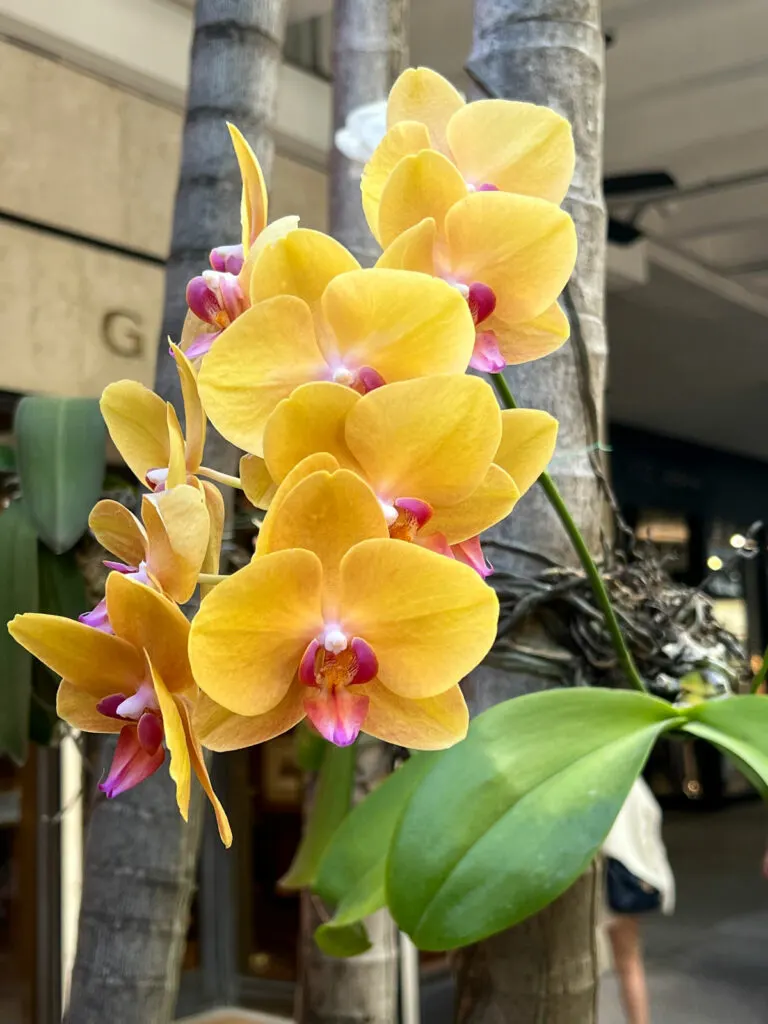
SPHAGNUM MOSS
Sphagnum moss will have much better water retention compared to bark, so you will be watering much less frequently. However, as I mentioned earlier in this post, the growing conditions will dictate the best potting mixture for your orchid.
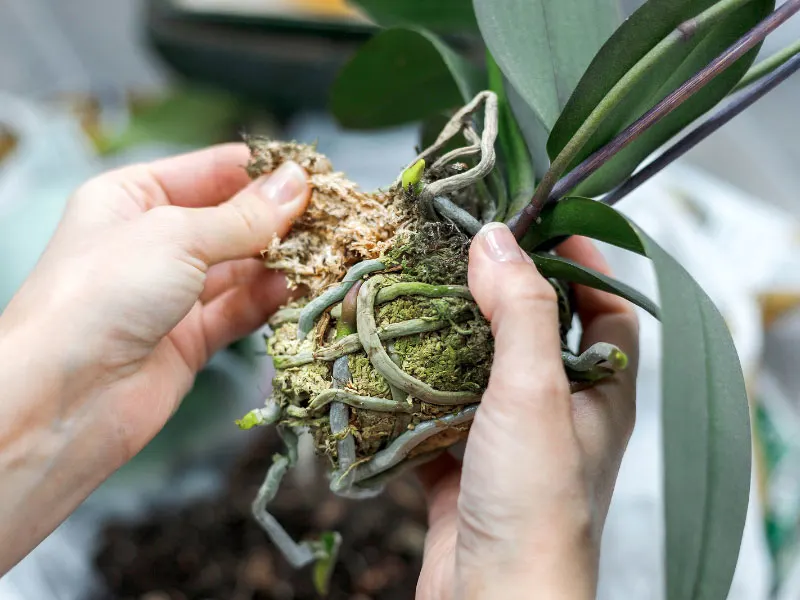
Although sphagnum moss can hold water much better than a bark mix, if you are growing your plant in lower light and lower temperatures, it may stay wet for too long and then risk root rot.
If you’ve repotted your orchid and you’ve noticed mushy soft roots, these have rotted.
Pure sphagnum moss by itself works best if you have lower humidity levels and higher temperatures.
Another way to make sure that your moss dries out more quickly is by using clay pots or terra cotta pots.
I would not advise using a watering schedule for orchids growing in sphagnum. Wait however long it takes in order for the top half-inch to an inch of moss is dried out before watering.
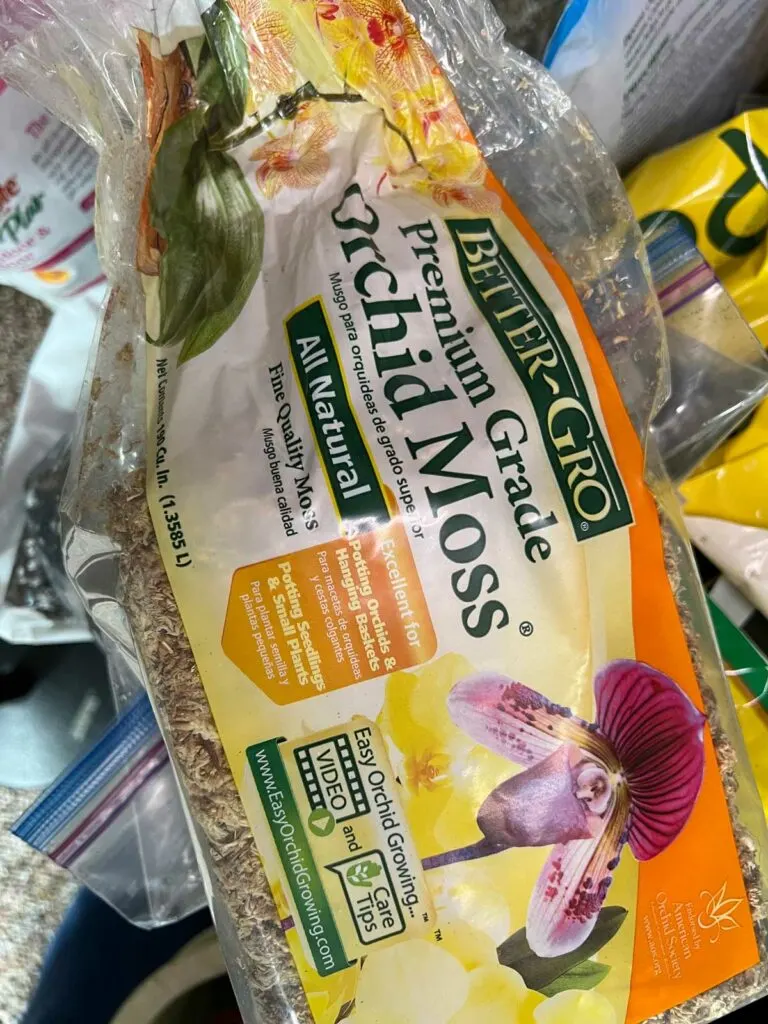
My favorite sphagnum moss to use is Better Gro Orchid Moss (link to Amazon). It’s great stuff and I always have some on hand for various plant projects.
BARK MIX
On the other hand, if you have a Phalaenopsis orchid growing in a fir bark mix growing medium, this is one instance where I would recommend a good watering schedule.
In a chunky bark mix, it is virtually impossible to “overwater” since the drainage is amazing, there are plenty of air pockets, and bark simply doesn’t hold a lot of water.
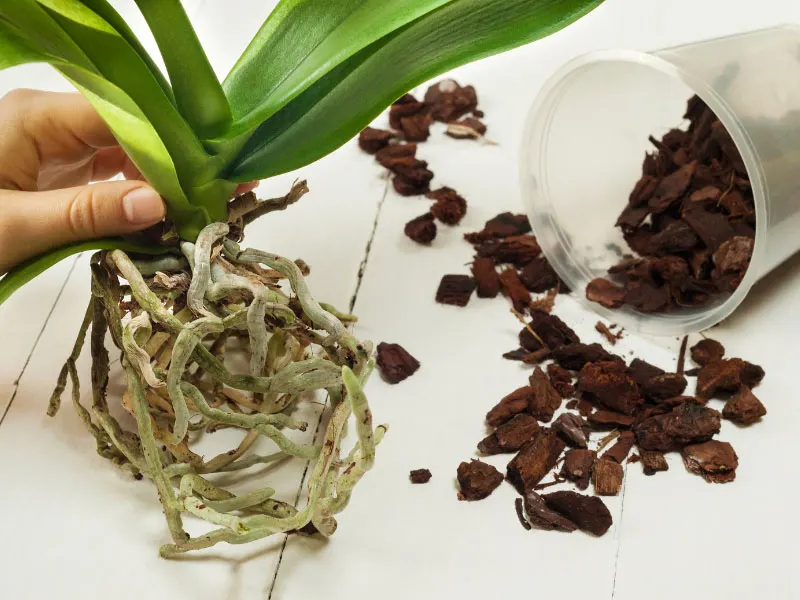
In their natural habitat, moth orchids are epiphytes and they literally grow attached to trees and their roots experience amazing drainage. Their root system is literally exposed to the air. So a chunky bark mix will more closely replicate their growing environment better than sphagnum moss.
For your orchid in bark, I’d recommend starting with a once-a-week soak and see how your plant performs.
Refer to my blog post on watering orchids for more details on best practices for watering, as well as what water type and fertilizer to use.
In the home, if you find that you can’t keep up with watering and your bark mix seems to dry out too quickly and you don’t want to increase the frequency of watering, simply mix in some sphagnum moss into your bark mix.
You can start with 1 part of sphagnum moss to 3 parts orchid bark. The addition of sphagnum moss will increase moisture retention, but keeping a good amount of bark will still leave a nice airy mix that orchid roots love.
FREQUENTLY ASKED ORCHID QUESTIONS
HOW CAN YOU TELL IF ORCHID ROOTS ARE HAPPY?
Orchid roots should be plump and should appear a silvery color when dry, and greenish when wet.
If your roots are wrinkled or shriveled but still firm, they’re dehydrated and you would need to water more often.
Keep in mind though that any aerial roots outside of the growing medium can dehydrate while the roots in the pot may still look good. Aerial roots need to be misted often in order to water them so that they don’t desiccate.
On the other hand, if you have any roots that are mushy and dark, or even that exhibit a rotten odor, those roots have developed root rot and have stayed wet for too long.
WHAT TYPE OF WATER IS BEST FOR ORCHIDS?
- Tap water is not the best, but honestly, it’s perfectly fine for most orchids. Keep it easy at first and as you get into orchids more, you can adjust your water source. Just be careful not to use water that has been treated in a water-softening system as many of them contain sodium which is toxic to plants.
- Avoid using ice cubes at all cost!
- Rain water is fabulous for orchids.
- The American Orchid Society advises against using only distilled water for your orchids. If you do, you should use a good fertilizer such as MSU Orchid Fertilizer (link to Amazon). I like to use Dyna-Gro Grow.
I hope you’ve enjoyed this post on how to water orchids in moss. Do you have a preference?

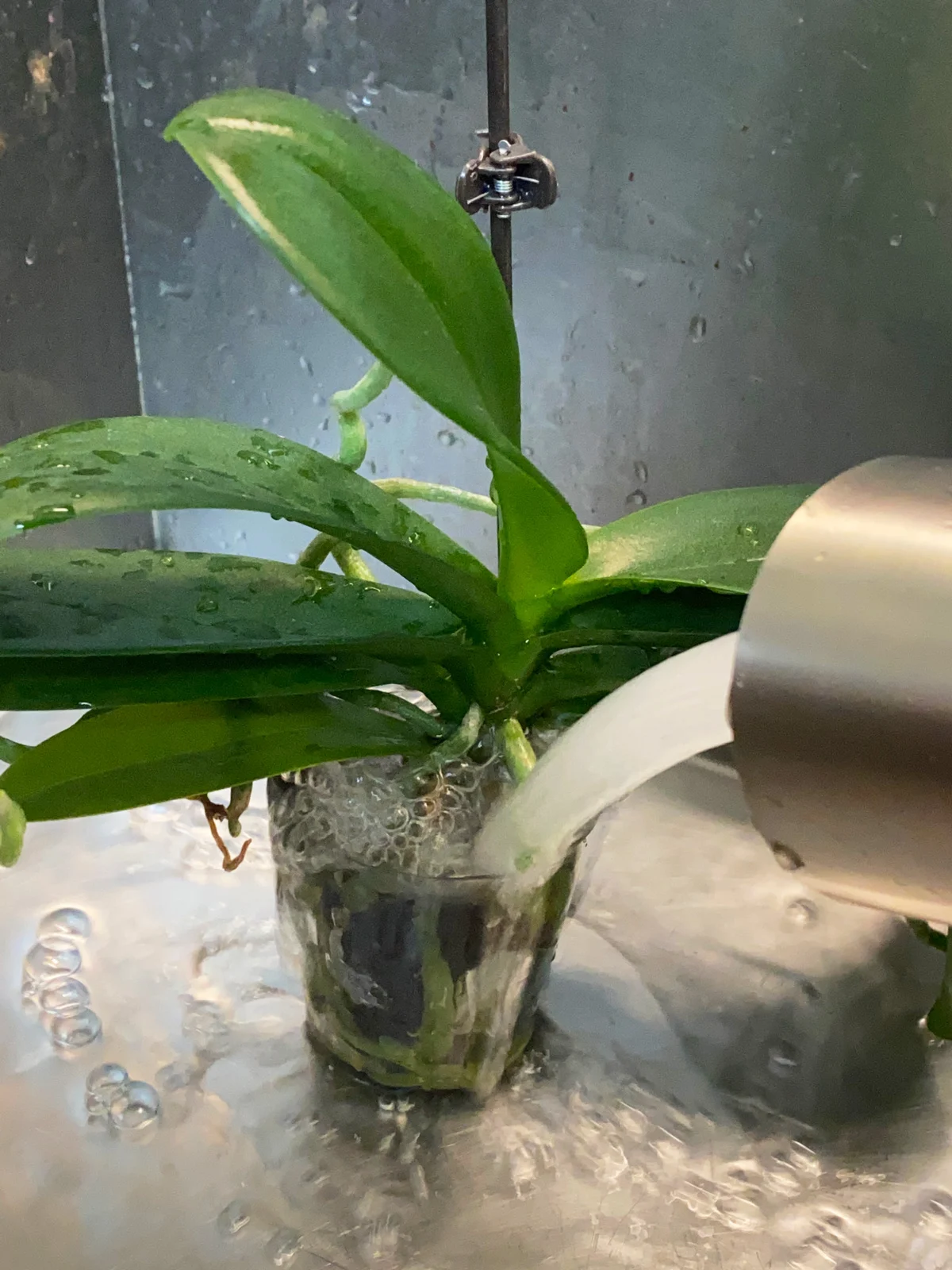
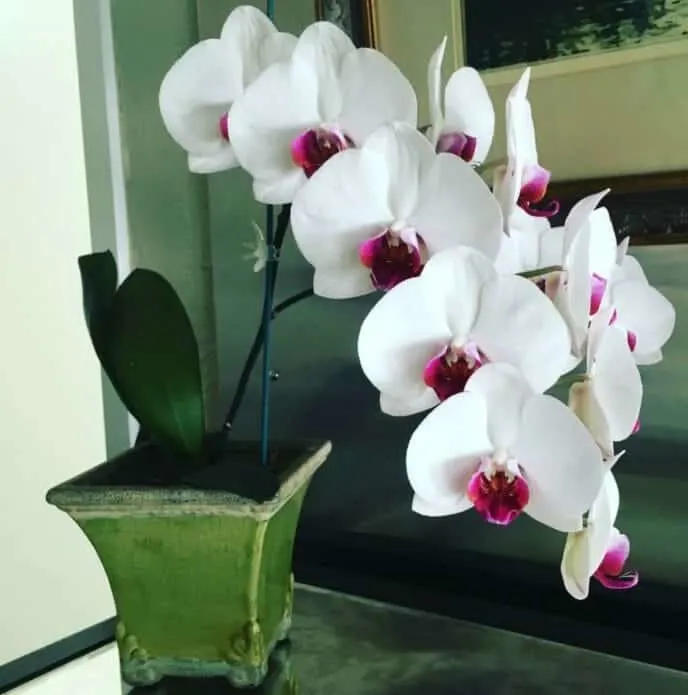
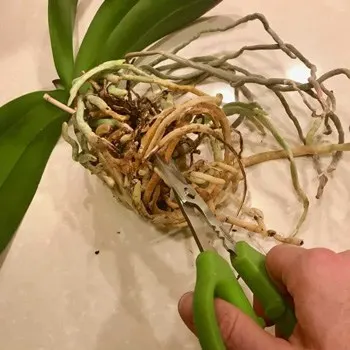
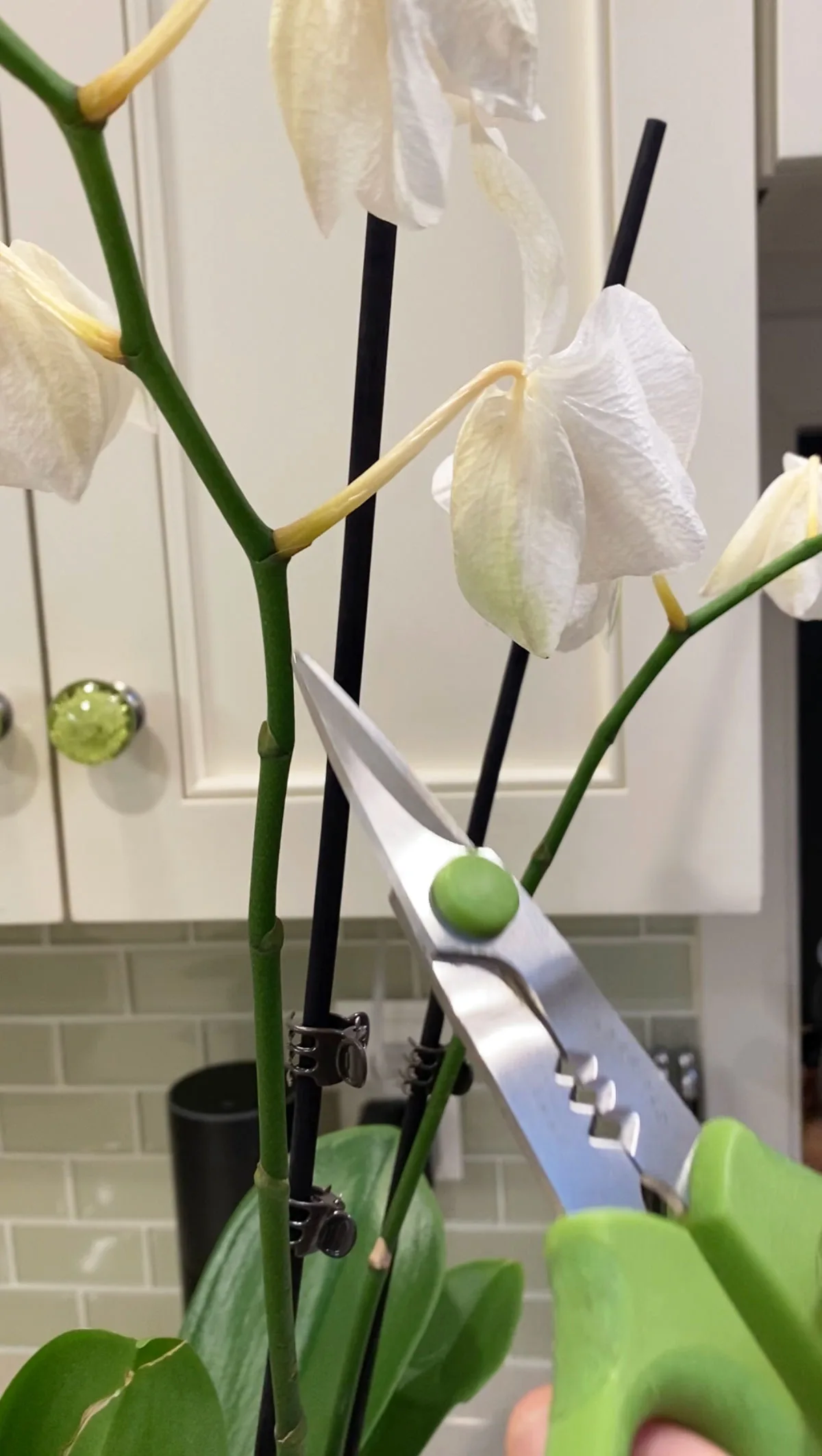
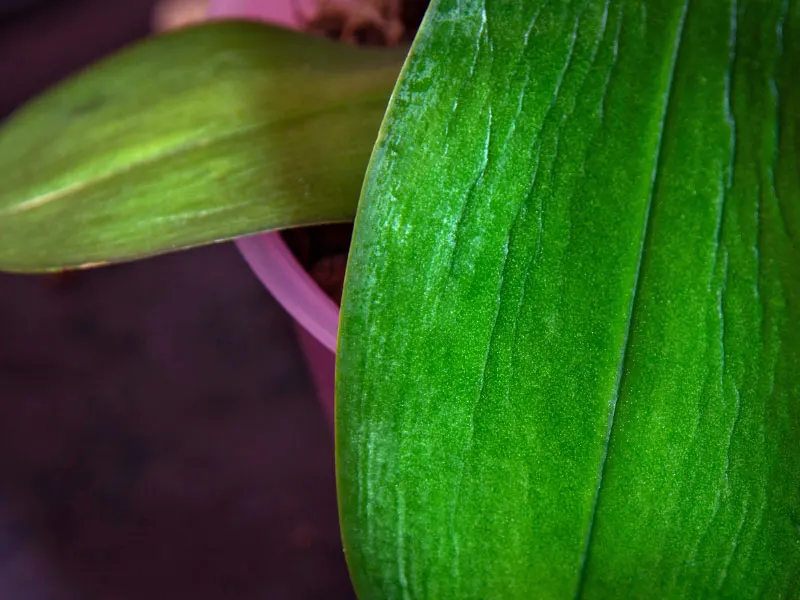
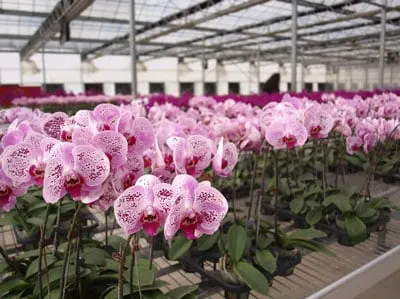
Tigz
Wednesday 3rd of May 2023
I have a question. I live in the south (Northeast Florida to be exact.) It seems that some of the orchids I have bought have an overabundance of stuffed sphagnum moss that never seems to dry out. I want to remove some of the smaller "espresso" orchids and mount them on a fence outside on a piece of corkwood. However, I am wondering if I couldn't use Spanish moss (which I have in abundance) as it retains less water than sphagnum moss but will still allow air circulation and it does indeed hold moisture. I am wondering if done correctly, the epiphytic cousins could thrive together.
Raffaele
Wednesday 3rd of May 2023
Yes, I don't see why you couldn't use that!
Scott
Friday 31st of March 2023
I am somewhat confused by your stance on watering orchids with ice. There are growers producing “Just Add Ice” orchids. They water them with ice cubes and are meant to be watered with ice cubes. Studies by the Ohio State University and the University of Georgia has shown there are no adverse effects by watering with ice cubes! So whose advice should we take?
Scott
Friday 31st of March 2023
@Raffaele, Granted I’m sure that growers do not place ice in every pot which would be too time consuming. But you’re telling me the studies done by Ohio State and the University of Georgia are wrong?
Raffaele
Friday 31st of March 2023
I can guarantee you that the Just Add Ice growers do not produce their orchids by watering them with ice. It's a marketing thing. I'd encourage you to try both methods and see what works for you though. I can tell you that I've helped a lot of people that have killed their orchids by using ice. Phalaenopsis orchids grow in tropical habitats and there is nothing close to ice in their ecosystem.
Amanda
Friday 24th of March 2023
I bought a dendrobium orchid today. It's absolutely gorgeous, and it has one bloom spike actively blooming as well as 3 or 4 additional spikes. I've never grown this species of orchid. Does it have the same requirements as moth orchids? Thanks for your help!